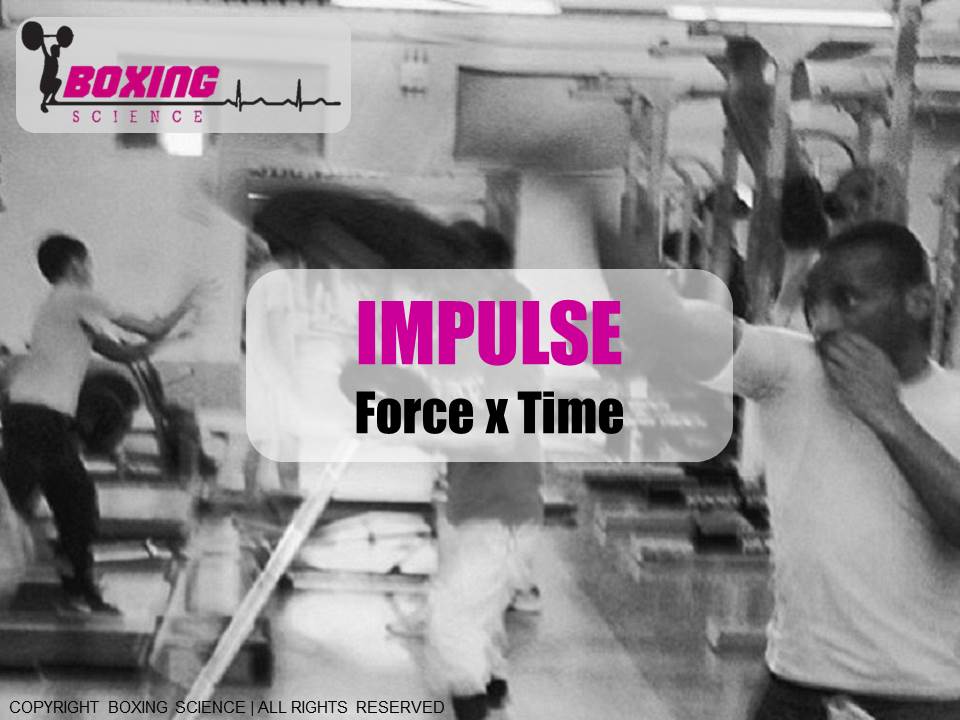Science behind the punch: Impulse
Knockout Facts:
- Forceful punches rely on the impulse-momentum relationship.
- Impulse is the amount of force developed in a short space of time.
- Resistance training, Olympic lifting, ballistic, sprint and plyometric training methods are proven to develop impulse.
Catch Up…
Essentially, Impulse is the amount of force developed in a short space of time. This is often called the rate of force development, important contributor to running, jumping and throwing performance, as well as… yeah you guessed it, PUNCH FORCE.
In boxing, it’s often the one who hits harder at a faster speed is often the winner, wouldn’t you agree? Well, impulse is a major contributor to that!
For a full catch up, check out our introductory article of ‘The Science Behind The Punch’ series, or for a check out this short video on what makes a forceful punch.
What Creates Impulse?
Impulse can rely on a number of genetic factors such as muscle fibre type and the nervous system. Usain Bolt has been blessed with the genetics to be able to produce large amounts of impulse to be the fastest man ever. Despite how much we could train, the majority of us will find it nearly impossible run as fast as him.
However, impulse and force production are trainable qualities, Usain Bolt would not have broke all them records without a hard and dedicated training history.
The impulse during a punch relies on punching technique, nervous system and speed of muscle contractions. A long with a good amount of technical training, there are plenty of strength and conditioning methods that can develop a more forceful punch.
Improving Impulse
There are many ways that we can train impulse, whether it is for upper, lower or whole body movements.
It is not just simple “move weights quicker”, you need to approach it from different angles. First of all, we need to train the ability to produce force through strength training. This should be the priority as this will give you more bang for your buck. The more force we can produce, the more impulse we can develop.
Check out the video below of Callum Beardow performing a 125 kg Front Squat for his 1RM. His depth is not perfect, we’ll let him off for a maximal attempt just this once as this is exceptionally strong for a Boxer (aged 18 at the time).
Initial strength and conditioning practice should aim to improve strength and movement foundations, as well as improving muscle size and strength endurance. This provides a foundation for maximal or near-maximal strength training via lower reps and higher weight loads.
When this has been achieved, the boxer can manipulate training with various methods, such as Olympic lifting, speed lifts and kettlebell exercises to develop the ability to produce force quickly. Our strength and conditioning training have both generic and sport-specific approaches. We overload punching patterns to improve the ability to send force generated at the foot all the way through to the fist.
Check out the range of exercises we prescribe for some of our more advanced athletes below.
Smart Training for a Complex Sport
Boxing is a very complex sport. Fighters need to be fast, strong and explosive for high intensity actions over 3 minute rounds, therefore aerobic and anaerobic endurance are also needed. This means that on top of a huge catalogue of skills and technical ability, a boxer also needs to train for a mixture of well-developed fitness qualities.
Training for this can be quite difficult, as a strength and power athlete (Javelin, Weightlifting, Sprinting) will have high impulse but fatigue quickly, then a marathon runner will be aerobically fit but not very fast or strong.
A Boxer needs both, so getting the right combination of aerobic and strength training is vital. There is a method we can use called Concurrent Training, this is where aerobic and strength training are manipulated for the appropriate goals of the athlete.
We will cover this with more detail in a future post because this is important to optimise physical performance, prevent over-training and reduce the likelihood of injury.
[tweetthis]More Bang for Your Buck. Improving Impulse for Punch Force #Boxing @BoxingScience_ [/tweetthis]
The Next Round
The next strength and conditioning article will be outlining the other piece to the punching puzzle, Momentum.
If you are interested in training with us, Get Involved.
Thanks
Danny Wilson MSc BSc ASCC
Strength and Conditioning Coach

